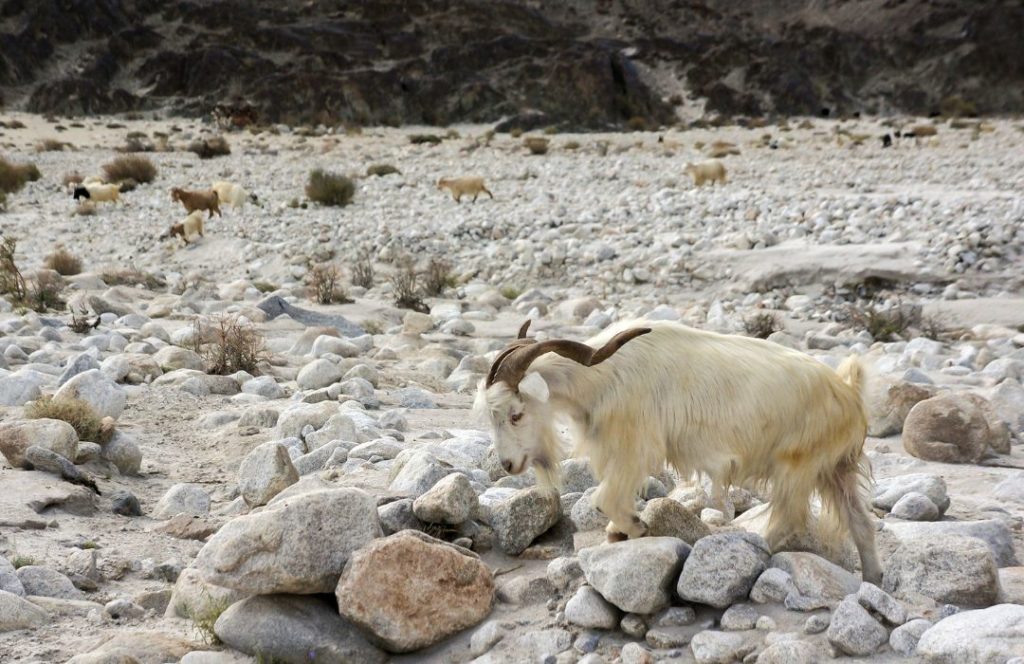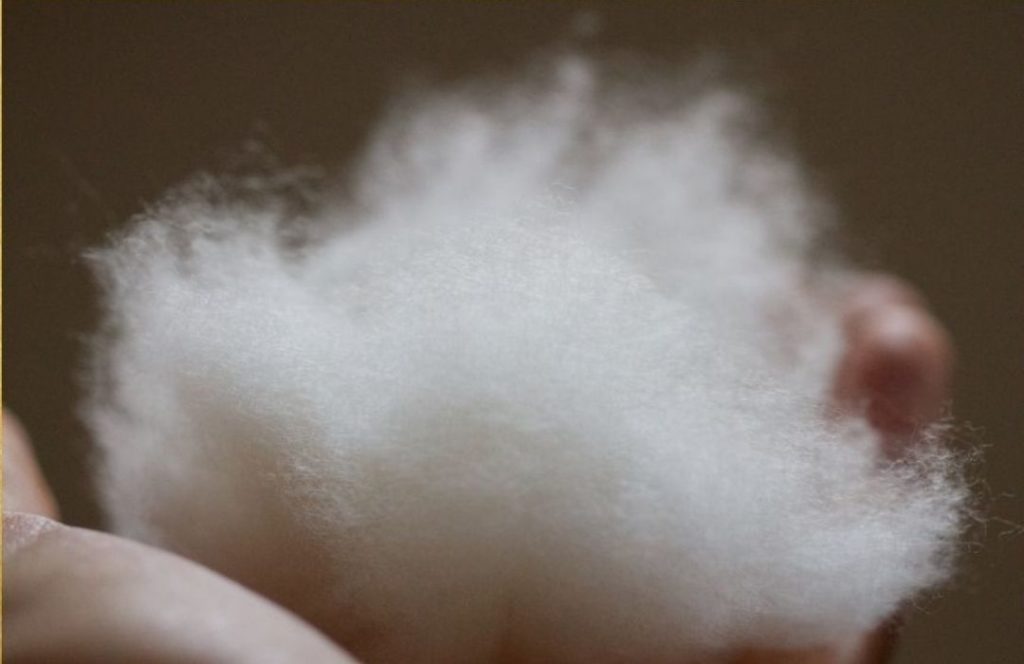Cashmere, often referred to as the "fibre of kings," is a luxurious material cherished for its exquisite softness, warmth, and elegance. Derived from the undercoat of Himalayan goats, this natural fibre has captivated the world with its unparalleled beauty and comfort. Despite its many alluring qualities, cashmere is also known for its delicacy, requiring gentle care and handling. In this blog, we will explore the factors that contribute to the delicacy of this luxury fibre, and understand the general are that one has to take when it comes to this luxury fibre. Special attention has been given to the practices that should be avoided if you own a Cashmere scarf, shawl, or outfit.
The Origins of Cashmere

Cashmere goats, native to regions with extreme climates, have developed a fine and soft undercoat as a survival mechanism. To endure the harsh cold winters of their natural habitats, these goats grow an insulating layer of fine hair that traps air and provides exceptional warmth. This undercoat is what yields the prized fibre, a delicate treasure that requires careful handling to preserve its intrinsic qualities.
Fine and Thin Fibres

The delicacy of cashmere begins with its fibre structure. The fibres are incredibly fine and thin, measuring less than 18 microns in diameter. To put this into perspective, these fibres are about one-eighth the diameter of a human hair. This fine structure contributes to the fabric's softness and lightweight feel, but it also makes it more susceptible to damage and wear.
Fragility and Prone to Pilling
Due to their fineness, cashmere fibres are more fragile compared to other natural fibres like wool. The delicacy of it makes it more susceptible to breaking or tangling, especially when subjected to friction or harsh cleaning methods. As a result, cashmere wraps are prone to pilling, the formation of small, fuzzy balls on the fabric's surface.
Sensitive to Temperature and Moisture
Cashmere is highly sensitive to changes in temperature and moisture. Exposing these wraps to excessive heat, hot water, or direct sunlight can cause the fibres to shrink, lose their original shape, and fade in colour. The delicate fibres also absorb moisture easily, making them more vulnerable to damage if not dried properly.
Prone to Stretching
While cashmere offers remarkable elasticity, it can lose its shape if stretched excessively or mishandled during washing or drying. Stretching can lead to losing shape or ill-fitting garments, which is why proper care is crucial to maintaining the fabric's original form.
Special Care Requirements

Given its delicate nature, cashmere requires special care and attention to preserve its beauty and softness. Hand washing is the preferred method for cleaning these fragile babies, as it allows for gentle handling and prevents damage to the fibres. Avoiding harsh detergents, wringing, and twisting are essential to prevent breakage and shrinkage.
Natural Colour Variations

Another aspect that contributes to the delicacy of cashmere is its natural colour variations. Himalayan goats produce fibres in a range of natural hues, including cream, beige, brown, grey, and even black. The colour variations result from differences in the goat's diet, genetics, and environment. These natural colours are celebrated for their organic beauty but can also require specialized dyeing techniques to achieve consistent shades.
Luxury Comes with a Price

The delicate nature of cashmere fibres makes the production process labour-intensive and time-consuming. Wraps and scarves are typically handcrafted to ensure the utmost care is taken during every step, from fibre selection to finishing. This craftsmanship adds to the allure and exclusivity of cashmere but also contributes to its higher price point compared to other fabrics
Also read: THE TRAIL OF INDIA’S CASHMERE GOAT MEN
What not to do with Cashmere
Cashmere is a delicate and luxurious material that requires proper care to maintain its softness, beauty, and longevity. To ensure you preserve the quality of your wraps or scarves, here are some things you should not do with these:
Do Not Use Hot Water
Avoid washing these wraps or scarves in hot water, as it can cause the fibres to shrink and lose their original shape. Stick to cool or lukewarm water when hand washing your cashmere. Washing these scarves/wraps/garments in hot water can cause permanent damage.
Do Not Wring or Twist
Never wring or twisting your cashmere wraps and shawls to remove excess water. This can damage the delicate fibres and lead to misshapen clothing. Instead, squeeze these in between your hands while rinsing
Do Not Use Harsh Detergents
Avoid using harsh detergents or cleaning agents, as they can damage the fibres and strip the softness from the material. Opt for a mild, cashmere-specific detergent or a gentle wool wash. These shampoos are easily available in the market
Do Not Agitate Vigorously
Gentle handling is key when caring for cashmere. Avoid vigorous rubbing or scrubbing, as this can agitate the fibres and cause them to tangle, leading to shrinkage and pilling. Shrunk scarves or those with piling look shabby and cheap.
Do Not Hang Wet
Hanging wet cashmere can cause stretching and misshaping. Instead, lay the wrap or scarf flat on a clean, dry towel to air dry after hand washing. The best way to dry it is to place it between two dry and clean towels and roll three together. This will squeeze the excess water out.
Do Not Use a Clothes Dryer
Avoid using a clothes dryer to dry cashmere. The heat and agitation can damage the fibres and lead to shrinkage. Always air dry flat to preserve its shape. It might take time to dry but will save your precious piece from damages
Do Not Use Bleach
Never use bleach as it can cause discolouration and weaken the fibres. Stick to gentle cleaning methods to maintain the integrity of the material. If you aren't able to clean Cashmere at home, hand it over to an authentic dry clean agent, and let him take care of the rest.
Do Not Store Dirty
Avoid storing cashmere items that are soiled or stained. Clean and completely dry the pieces before storing them to prevent stains from setting and attracting pests.
Do Not Store in Plastic Bags
Refrain from storing cashmere in plastic bags, as they can trap moisture and promote the growth of mildew or mould. Instead, use breathable bags or wrap it in tissue paper.
Do Not Expose to Sunlight or Heat
Protect your cashmere wraps and shawls from direct sunlight and excessive heat. Prolonged exposure to these elements can cause fading and damage to the fibres.
Do Not Overexpose to Fragrances
Avoid spraying perfumes or other fragrances directly onto cashmere. The chemicals in these products can react with the fibres and cause discolouration or damage.
Do Not Iron Directly
Do not iron directly, as the heat can harm the fibres. If needed, use a cool iron with a pressing cloth or a steamer to refresh and remove wrinkles from your cashmere pieces.
Concluding
By avoiding these common mistakes and following proper care instructions, you can ensure that your cashmere garments remain soft, beautiful, and in pristine condition, providing you with luxurious comfort for years to come.
Also read: 5 CASHMERE SCARVES YOU SHOULD DEFINITELY OWN